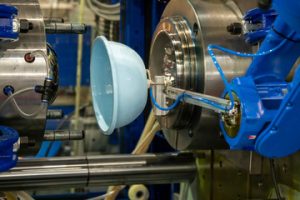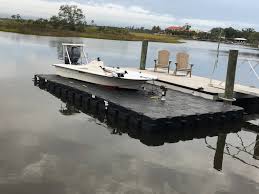Even a petite grand piano can be difficult for non-professionals to move without damaging it or themselves. Hiring professional piano movers is the smart way to do this heavy-lifting task.
Piano movers use specialized equipment like furniture, blankets, ramps, and four-wheel dollys to transport the instrument safely to its new home. They also know how to navigate narrow doorways, stairs, and corners easily. Contact Piano Movers Denver now!

Pianos are very large, delicate instruments that require special care when moving. Moving a piano is a time-consuming and difficult task that should only be done by qualified professionals. The first step in a successful move is to have the right equipment. Using tools like specialized dollies and heavy-duty straps reduce the risk of damage to both the piano and its surroundings. This also makes it easier to maneuver the piano, which is essential when transporting such a large and unwieldy instrument.
A good piano mover will also be equipped with a tailgate to assist in the loading and unloading of the instrument. The tailgate is designed to lift the piano up onto a truck bed and then gently lower it into place. This can help prevent back strain for the movers and ensure that the piano is safely placed into its new home.
Professional piano movers will also have the manpower to efficiently and safely transport the piano through tight spaces, such as flights of stairs. This is crucial, as damaged pianos can be very expensive to repair or replace. Additionally, piano movers will be able to protect the instrument by wrapping it in protective padding and coverings.
Before the actual move, a piano mover will take the time to measure hallways, doorways, staircases, and other key areas to make sure that the instrument will fit. They will also use this information to plan ahead and determine alternative routes if necessary. Additionally, they will likely use specialized techniques and equipment, such as a crane or hoist, to get the piano through a window or balcony safely.
When you’re ready to hire a piano mover, consider looking for one on uShip. This site lets you compare quotes from multiple carriers in one easy-to-use platform, and it’s free to post a shipment. Whether you’re looking to transport an upright or grand piano, uShip can connect you with the best professionals for your needs. Start your search today!
They Have the Experience
Pianos are delicate and heavy musical instruments that require ample preparation, specialized handling equipment, and highly trained professionals. Hiring a team of professional piano movers dramatically reduces the risk of damage to your piano and home, saving you from expensive repair bills.
Piano movers have extensive experience maneuvering large, heavy musical instruments through tight spaces and tricky home layouts. They’ve developed techniques for navigating stairs, hallways, and doorways without scratching your piano or damaging your home. In addition, they understand the intricacies of securing and transporting large, fragile pianos on the back of a truck, which makes them a safer choice than regular movers who may not have enough experience or expertise to safely move your piano.
When selecting a piano moving company, ask about their years of experience and how often they’ve moved similar instruments. Also, find out what their process is for disassembling and packing a piano so that they can ensure its safe relocation. You should also consider whether they have an in-person or virtual walkthrough to assess the situation and make a fair, binding quote.
Most reputable piano movers offer competitive rates and flexible scheduling, as well as additional services like piano tuning. However, it’s important to know that no movers can guarantee that your piano won’t sustain some amount of damage during transportation, regardless of the precautions they take. It’s best to book a piano moving service 4-6 weeks in advance for the most cost-effective pricing and optimum scheduling.
While the upfront cost of a professional piano move may seem costly, it’s essential to remember that you will save money in the long run by avoiding the stress and expense of a DIY move. Not to mention, hiring a professional pianist moves company protects your home and belongings from damages that could be covered by homeowner’s insurance or other personal coverage. In fact, many homeowners who attempt to move their own pianos end up spending more in the long run because of the unforeseen costs associated with replacing damaged furniture, electronics, and other items. Professional piano movers are well worth the investment!
They Are Fully Insured
The best piano movers will have both public liability and cargo insurance coverage. This can help you avoid costly expenses if the movers accidentally damage your property during a move. A good company will also be able to provide you with references from past clients that can vouch for their services. This can give you an idea about the quality of their work and their reliability.
When choosing a piano moving company, it is important to verify their credentials and experience. Look for specialized training and an established history of performing successful moves. You should also ask about their specialized equipment and tools. For instance, they should have special dollies and padded blankets that can protect your piano from scratches and dents during transit.
Additionally, make sure that they offer specialized insurance to cover the value of your instrument. This type of insurance typically offers higher coverage limits than standard home and contents policies, and can also provide you with a replacement if your piano is damaged during the move.
Another key factor to consider when hiring a piano moving company is their ability to perform a thorough inspection of your piano before and after the move. This will ensure that they have the proper tools and equipment to properly handle your piano, and that it is ready to be safely transported to its new home.
The piano is often the most expensive item in a household, so it’s essential to find a company that can protect your investment. Check with your moving company to see if they offer a comprehensive insurance policy that covers the cost of repairs or replacement in case of damages. Also, make sure to review the coverage limit and deductibles so that you can be fully prepared for what to expect.
Once your piano has been securely packed, the movers will load it onto a specialized truck. These trucks are designed to minimize movement during transport, ensuring that your piano will arrive in perfect condition at its new home. Additionally, long-distance movers will plan out the most efficient route to avoid bumpy roads or tight turns that could damage the piano.
They Are Flexible
Pianos are incredibly heavy and difficult to move without damaging them or yourself. It’s a task best left to professional movers that can expertly manage a complicated move safely and efficiently. Whether you need your piano moved upstairs or across the room, or you’re shifting to another home and need it relocated entirely, hiring piano movers to complete your move can save you from a world of stress and potential damage.
Having flexible piano movers on hand can make the entire process easier and more convenient for you. They can provide you with a detailed, itemized quote upfront and ensure all services are included so you don’t end up with any surprise add-on fees. They will be able to accommodate you for the day you need your piano moved, so long as the date is not in high demand. They can also help with other aspects of the move if needed, such as dismantling your piano and packing it into the truck, or unpacking and reassembling it at the other end.
When choosing a company to work with, ask about their previous experience working with pianos and check online reviews and references. You should also find out if they are WSIB covered and insured, which is a requirement by law in Canada. This will protect you in case one of their employees gets injured while on the job and will cover medical expenses and lost wages.
Moving a piano requires abundant preparation and specialty handling equipment to prevent the instrument from becoming damaged, or even worse, out of tune. It’s essential to hire a professional piano mover that can provide you with a transparent quote, real-time tracking and specialized trucks for worry-free relocation no matter the distance.
Whether you’re looking for a full piano move or just a helping hand, Ezy Peazy can connect you with trusted local piano movers in minutes. Simply post your job on our innovative platform, specify the details of your task and your preferred budget and timeframe. We’ll then invite offers from nearby taskers who are qualified to complete the job. You can then easily browse their profiles, read reviews and reviews from previous customers and select the tasker who suits your needs best.








